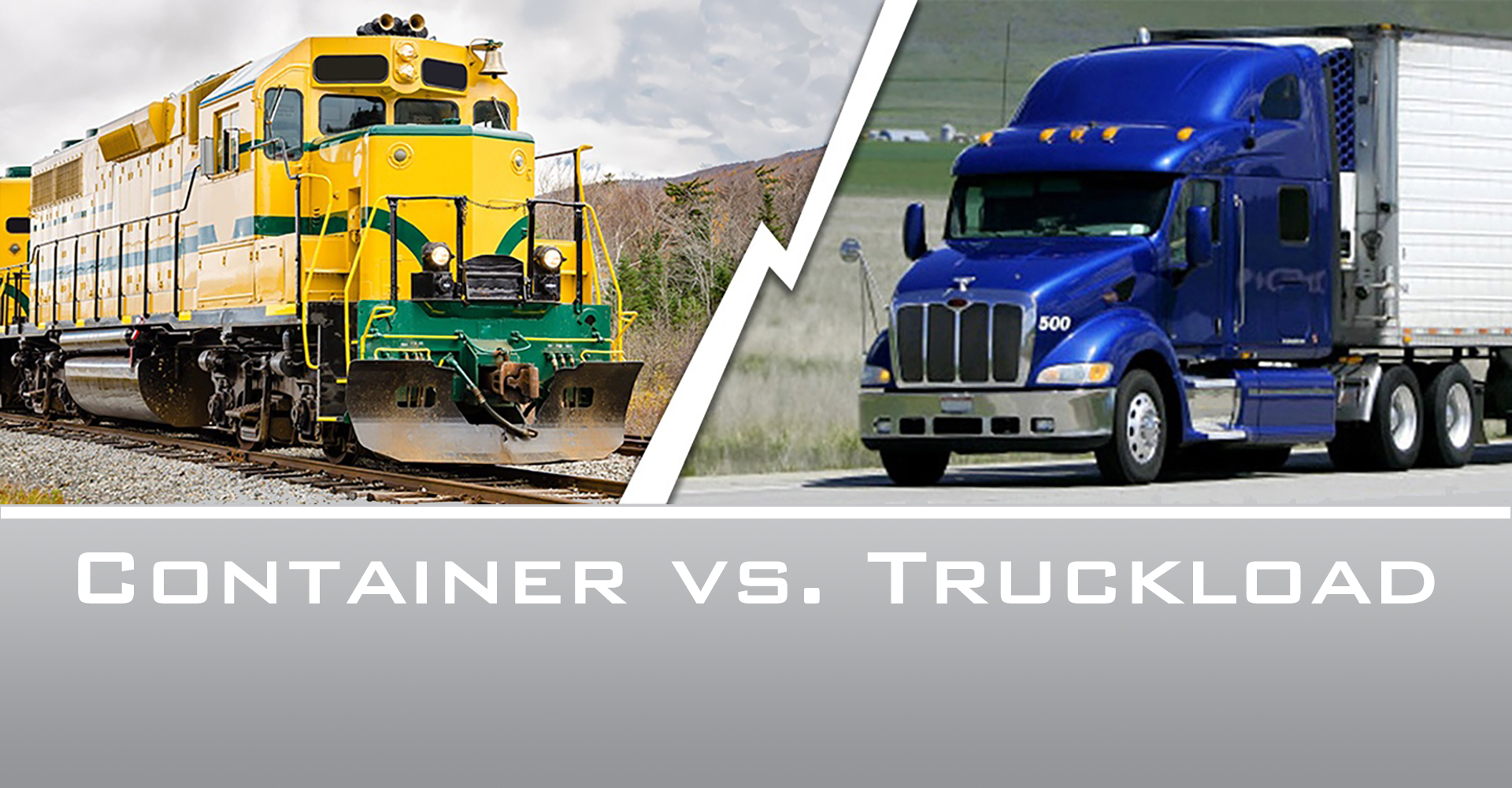Accurately calculating the costs of shipping via container or truckload shipping for North American companies is critical to maintaining profitability. The dynamic nature of cost between container and truckload shipping leads to a situation where companies must have a broad awareness of the shipping market and choose the most effective option for them under current market conditions. Navigating the pros and cons of each option is an ongoing process that can present unique challenges for each company. Although costs must be balanced between the two shipping modalities, there are also other concerns that affect the decision to go with one option over another.
The Importance of Infrastructure
Shipping via container is advantageous for many companies because it allows them to take advantage of different modalities of shipping, including ocean, rail, and truck seamlessly. Known as intermodal shipping, this method has inherent strengths over truckload shipping for goods that are being imported and then distributed domestically. However, for intermodal shipping to be cost-viable for domestic companies, they must have ready access to the necessary infrastructure that supports it. Domestic intermodal shipping relies heavily on road and railway networks to facilitate the movement of goods between locations. The health, efficiency, and location of the domestic intermodal shipping infrastructure is an important factor for NA companies when deciding the ideal shipping method. Domestic intermodal shipping has been an area of significant growth in recent years for the US railway industry. As such, investment targeted at developing the US infrastructure to support increased domestic intermodal shipping will result in lowest shipping costs, wider availability, and increased efficiency in the coming years.
Location is Key
When making determining the costs of each different type of transportation option, the location of receiving and distribution centers is key for North American companies. Companies that operate close to busy ports on the West and East coasts of the United States may find that intermodal shipping is the ideal option for them. In contrast to this, companies operating out of landlocked states will have to weigh the benefits and drawbacks of truckload versus container shipping. Ready access to rail lines can make intermodal transport an appealing option for landlocked distributors, as it allows them to move international goods by ocean, rail, and then truck without having to unload or handle their cargo. On the other hand, some companies without ready access to intermodal transportation infrastructure may find that the costs, delivery speed, and loading requirements for truckload shipping makes it the more desirable choice.
Demand Influences the Dynamic
Both intermodal and truckload shipping channels are experiencing unprecedented demand. High demand for intermodal and truckload services is causing volatility in shipping prices in the short-term and may lead to increased shipping costs over the long-term if infrastructure development fails to catch up to demand. Additionally, the increased mass of goods moving across sea and ground transportation channels is leading to increased instances of delayed shipments due to high traffic in common shipping regions and ports, increased wait times for goods to be offloaded and processed through customs, and greater strain on the equipment being used in the transportation industry. The transportation industry is attempting to modernize operations and grow to meet demand, but are struggling to keep up with the pace of change.
In the coming years, the dynamic nature of the costs of shipping goods via intermodal transport or truckload will continue to shape the decisions of North American firms. As increased automation begins to be applied on a wide scale in the intermodal shipping industry, the efficiency that automation will bring may make ground shipping much more desirable for the movement of domestic goods. At the same time, increased automation is not limited to the intermodal shipping sector. Truckload shipping is on the verge of becoming more modernized, with firms exploring self-driving trucks as a way to reduce operating costs and increase efficiency. Additionally, as the shipping industry continues to adapt to accommodate increased demand, the volatility of pricing should begin to stabilize. Lastly, as infrastructure is improved to further facilitate the movement of domestic and overseas goods into North America, companies will be able to more reliably forecast shipping costs for moving their goods to market. For North American companies, deciding between intermodal and truckload shipping in the current market conditions requires balancing efficiency, cost, and location to find the best option at the time. At times, the tradeoff between the slightly slower rate intermodal shipping, versus higher costs in truckload shipping, may result in firms adjusting their manufacturing and distribution cycles to accommodate longer shipping times. Companies that demonstrate flexibility and stay abreast of changes in the transportation industry will be well positioned to continually secure consistent and price effective shipping avenues.

